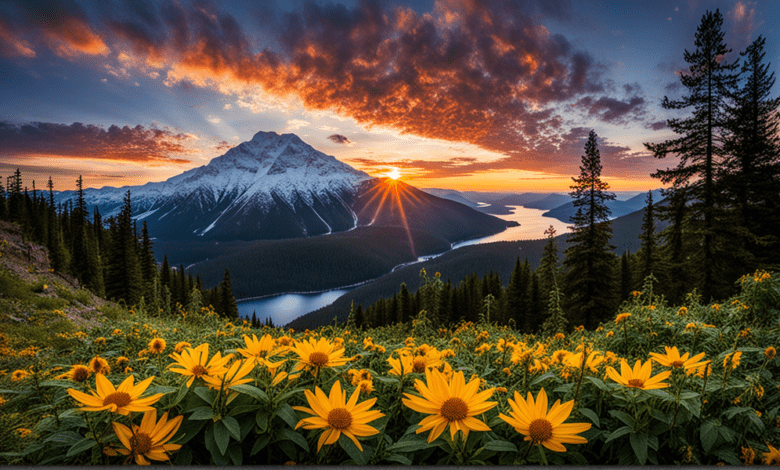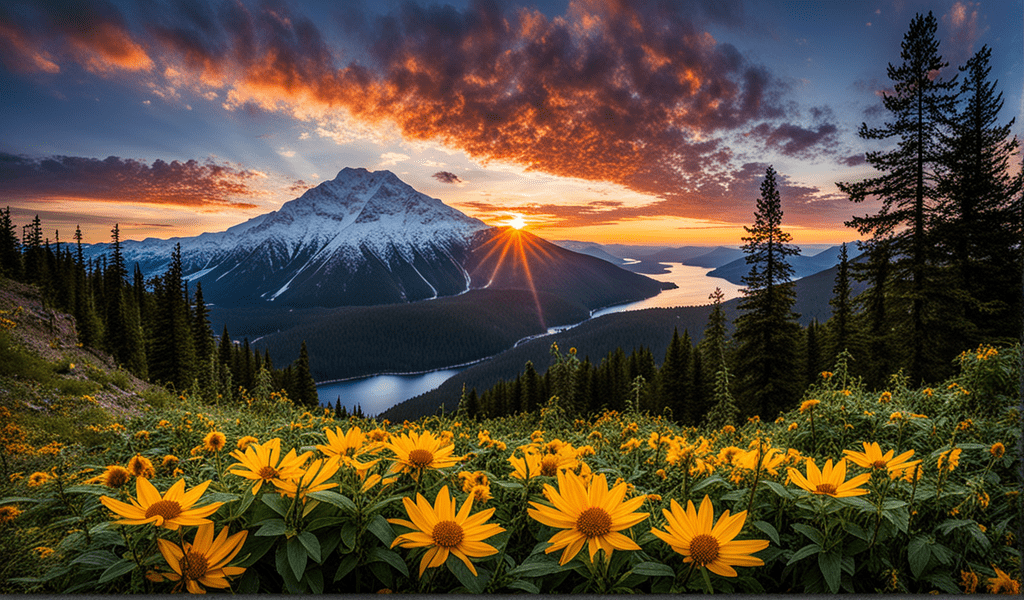
SEO for Nature Photographers Sharing the Beauty of the Outdoors

Introduction
For nature photographers, Search Engine Optimization (SEO) is a powerful tool to share the beauty of the outdoors, attract photography enthusiasts, and gain recognition in a competitive field With the increasing interest in nature photography and outdoor exploration, optimizing for SEO can significantly enhance the visibility of nature photographers and connect them with a wider audience of potential admirers In this comprehensive guide, we will explore the significance of SEO for nature photographers and provide actionable strategies to share the beauty of the outdoors
1 Identify Your Target Audience and Define Your Photography Style
The first step in sharing the beauty of the outdoors is to identify your target audience, such as nature enthusiasts, travelers, or individuals seeking wall-worthy prints Clearly define your photography style, whether it’s landscapes, wildlife, macro, or any other niche, and showcase it throughout your online portfolio to resonate with your audience and establish your brand identity

2 Optimize Website Content with Relevant Nature Photography Keywords
Optimize your website content by incorporating relevant nature photography keywords that reflect your focus and expertise Use keyword-rich s, meta descriptions, and alt tags for images to improve search discoverability and rank higher in search engine results
1. Conduct Keyword Research:
Start by conducting thorough keyword research to identify relevant terms in the nature photography niche. Use tools like Google Keyword Planner, SEMrush, or Ahrefs to discover high-ranking and pertinent keywords.
2. Focus on Specific Nature Themes:
Tailor your keywords to specific nature themes or subjects. Whether it’s landscapes, wildlife, macro photography, or environmental conservation, using niche keywords helps you reach a more targeted audience.
3. Incorporate Long-Tail Keywords:
Include long-tail keywords to capture more specific search queries. Long-tail keywords are often less competitive and can attract visitors looking for detailed or specialized content in the realm of nature photography.
4. Integrate Location-Specific Keywords:
If your nature photography is location-specific, incorporate keywords related to geographic locations. This can include the names of specific parks, nature reserves, or scenic areas where your photography is focused.
5. Optimize Image Alt Text:
Ensure that the alt text for your nature photography images includes relevant keywords. This not only improves accessibility but also contributes to SEO, as search engines use alt text to understand the content of images.
6. Use Keywords in Titles and Headings:
Integrate your chosen keywords naturally into titles and headings on your website. This helps search engines understand the main topics of your pages and improves the overall SEO of your content.
7. Create Captivating Image Descriptions:
Craft compelling image descriptions that incorporate nature photography keywords. These descriptions not only enhance the user experience but also provide additional context for search engines.
8. Build Content Around Key Themes:
Develop content that revolves around key nature photography themes. This could include blog posts, articles, or galleries that showcase your photography and incorporate relevant keywords within the text.
9. Utilize Social Media:
Share your nature photography on social media platforms and use nature photography keywords in your captions and posts. Social media content is often indexed by search engines, contributing to your overall online presence.
3 Create an Inspiring and Diverse Portfolio
Create an inspiring and diverse portfolio that showcases your best nature photography work from different locations and seasons Use high-quality images and descriptive captions to immerse potential admirers in the beauty of the outdoorshttps://scholarshipresort.com/

4 Utilize Long-Tail Keywords for Specific Nature Themes
Incorporate long-tail keywords into your content to target specific search queries related to nature themes, such as “sunset over mountains,” “birds in flight,” or “wildflowers in spring” Long-tail keywords can attract highly targeted traffic and connect you with individuals seeking specific nature images
1. Identify Nature Themes:
Begin by identifying the specific nature themes that are prominent in your photography. This could include themes like “mountain landscapes,” “tropical wildlife,” “macro flower photography,” or any other niche focus that characterizes your work.
2. Conduct Themed Keyword Research:
Perform keyword research specifically tailored to each nature theme you’ve identified. Utilize tools like Google Keyword Planner, SEMrush, or Ahrefs to discover long-tail keywords associated with these themes.
3. Incorporate Location-Specific Terms:
If your nature photography is tied to specific locations, incorporate location-specific terms into your long-tail keywords. For example, “coastal birdwatching in California” or “autumn foliage in the Adirondacks.”
4. Use Descriptive Phrases:
Craft long-tail keywords using descriptive phrases that capture the essence of your nature themes. Think about the terms and phrases someone interested in your specific nature theme might use in a search query.
5. Include Seasonal Keywords:
If your nature photography varies with the seasons, include seasonal keywords in your long-tail phrases. This can attract audiences looking for themes specific to certain times of the year, such as “spring wildflower photography” or “winter wildlife scenes.”
6. Optimize Image File Names:
Optimize the file names of your nature photography images with long-tail keywords. This not only enhances the SEO of your images but also contributes to the overall optimization of your website.
7. Create Dedicated Pages or Galleries:
Develop dedicated pages or galleries on your website for each specific nature theme. Optimize these pages with long-tail keywords to provide a focused and comprehensive experience for visitors interested in those particular themes.
8. Craft Content Around Themes:
Build content around each nature theme, incorporating long-tail keywords naturally within blog posts, articles, or image descriptions. This not only improves SEO but also provides additional context for your audience.
9. Utilize Social Media Hashtags:
Extend the reach of your nature themes by using long-tail keywords as hashtags on social media platforms. This can increase the discoverability of your content among users interested in specific nature-related topics.
5 Implement Structured Data for Photography Awards and Recognition
Implement structured data markup to highlight any photography awards, recognition, or publications you have received Showcasing your achievements can build trust and credibility with potential admirers
. Understand Structured Data Markup:
Familiarize yourself with structured data markup, particularly the schema.org vocabulary. Structured data uses standardized formats to provide additional context about the content on your website.
2. Choose Appropriate Markup Type:
Select the appropriate markup type for photography awards and recognition. The schema.org vocabulary includes markup for various types of creative works, including awards, honors, and achievements.
3. Implement JSON-LD Markup:
Utilize JSON-LD (JavaScript Object Notation for Linked Data) for implementing structured data. JSON-LD is a preferred format for search engines, as it allows you to include the structured data directly within the HTML of your web page.
4. Include Award Details:
Ensure that your structured data includes relevant details about the photography awards and recognition you’ve received. This may include the name of the award, the organization granting it, the date of recognition, and any other pertinent information.
5. Specify Creative Work:
Specify the creative work associated with the award. This could be the specific photograph, series, or project that received recognition. Clearly link the award to the corresponding creative work within your structured data.
6. Provide Additional Context:
Include additional context about the award, such as the criteria for selection, the significance of the recognition, and any notable aspects of the winning work. This information enriches the understanding of your achievements.
7. Link to Official Award Pages:
If applicable, provide links to official award pages or relevant pages on the awarding organization’s website. This establishes the legitimacy of your recognition and allows users to verify the details independently.
8. Optimize Metadata:
Optimize metadata on the page where you showcase your photography awards. Ensure that the metadata includes relevant keywords, descriptions, and information about the awards to enhance search engine visibility.
9. Test with Structured Data Testing Tools:
Use structured data testing tools provided by search engines, such as Google’s Structured Data Testing Tool, to validate the correctness and completeness of your implementation. This ensures that search engines can interpret your structured data accurately.
6 Leverage Social Media for Nature Photography Showcases
Leverage social media platforms to share your nature photography, photography tips, and stories behind your favorite shots Visual storytelling on social media can lead to increased website traffic and brand recognition
Choose the Right Platforms:
Identify the social media platforms that align best with your target audience and the visual nature of your photography. Instagram, Pinterest, and Facebook are popular choices for sharing visual content.
2. Create a Consistent Brand Presence:
Maintain a consistent brand presence across your social media profiles. Use a recognizable profile picture, cohesive bio, and a consistent posting style to reinforce your brand identity.
3. Curate Stunning Galleries:
Curate galleries or albums of your nature photography on platforms that support this feature, such as Facebook or Instagram. Arrange your photos thematically or chronologically for a visually appealing showcase.
4. Utilize Instagram Stories and Highlights:
Leverage Instagram Stories for behind-the-scenes content, sneak peeks, or short video clips. Create Highlights to organize and showcase your best nature photography for a longer period.
5. Engage with Captivating Captions:
Accompany your nature photos with engaging and descriptive captions. Share stories, insights, or interesting facts related to each photograph to create a connection with your audience.
6. Leverage Relevant Hashtags:
Use relevant and popular hashtags to increase the discoverability of your nature photography. Research and include hashtags related to specific themes, locations, or photography styles.
7. Host Instagram Takeovers:
Collaborate with other nature photographers or influencers for Instagram takeovers. This cross-promotional strategy introduces your work to new audiences and enhances community engagement.
8. Encourage User-Generated Content:
Encourage your followers to share their nature photos using a branded hashtag. This not only builds a sense of community but also provides you with a diverse range of content to showcase.
9. Participate in Photo Challenges:
Engage with the photography community by participating in or hosting photo challenges. This encourages interaction, boosts visibility, and brings attention to specific nature themes.
7 Collaborate with Nature Influencers and Conservation Organizations
Collaborate with nature influencers, conservation organizations, and outdoor brands to gain exposure and expand your reach within the nature photography community Partnerships can lead to increased recognition and appreciation for your work
. Identify Relevant Influencers and Organizations:
Research and identify nature influencers whose values align with your brand and photography style. Look for conservation organizations that share a passion for the environment and wildlife. Ensure that their audience aligns with your target demographic.
2. Establish Common Goals:
Before reaching out, identify common goals and values that you share with the influencers and organizations. Whether it’s promoting environmental conservation, raising awareness about specific issues, or inspiring a love for nature, having shared objectives forms the basis for a strong collaboration.
3. Craft a Personalized Outreach:
When reaching out to influencers and organizations, craft personalized and genuine outreach messages. Clearly articulate why you want to collaborate, how your nature photography aligns with their mission, and the mutual benefits of the partnership.
4. Propose Collaborative Projects:
Propose specific collaborative projects that leverage your nature photography skills. This could include joint photo campaigns, virtual exhibitions, social media takeovers, or co-hosting educational events. Tailor your proposals to align with the goals of the influencers or organizations.
5. Offer Value in Exchange:
Clearly outline the value you bring to the collaboration. Whether it’s providing captivating visual content, contributing to their campaigns, or offering your platform for increased visibility, emphasize the benefits of working together.
6. Participate in Conservation Initiatives:
Actively participate in conservation initiatives organized by influencers or organizations. This could involve documenting their projects through your photography, volunteering your time, or contributing a percentage of your sales to conservation efforts.
7. Collaborate on Social Media Campaigns:
Collaborate on social media campaigns that raise awareness about environmental issues. Share your nature photography as a visual storytelling tool to convey the importance of conservation. Coordinate posting schedules to maximize impact.
8. Attend or Host Events Together:
Attend or co-host events related to nature, photography, or conservation. This could include workshops, webinars, or physical events where you can showcase your photography and actively engage with the audience.
9. Share Resources and Expertise:
Collaborate by sharing resources and expertise. Offer your photography skills for promotional materials, and in turn, benefit from the knowledge and resources that influencers and organizations can provide.
8 Utilize Video Content for Behind-the-Scenes Insights
Utilize video content to showcase behind-the-scenes footage of your photography adventures, editing process, and encounters with wildlife Video content can provide a more immersive experience for your audience
1. Choose the Right Platform:
Select a platform that is conducive to video content, such as YouTube, Instagram, or Facebook. Choose a platform that aligns with your audience and allows for easy sharing of behind-the-scenes videos.
2. Showcase the Creative Process:
Take your audience behind the scenes of your nature photography by showcasing your creative process. This could include setting up equipment, scouting locations, or capturing spontaneous moments that contribute to your final shots.
3. Share Equipment and Techniques:
Offer insights into the equipment and techniques you use for your nature photography. Explain how you choose your gear, set up your shots, and overcome challenges. This not only educates your audience but also builds trust and credibility.
4. Introduce Your Team or Collaborators:
If you work with a team or collaborate with others, introduce them through behind-the-scenes videos. Showcase the collaborative effort, share their roles, and highlight the teamwork involved in creating your nature photography.
5. Include Narration or Commentary:
Provide narration or commentary throughout the behind-the-scenes videos. Share your thoughts, experiences, and the stories behind specific shots. This adds a personal touch and enhances the storytelling aspect of your content.
6. Highlight Challenges and Solutions:
Be transparent about challenges you face during your nature photography sessions and how you overcome them. This authenticity resonates with viewers and demonstrates your resilience and problem-solving skills.
7. Offer Sneak Peeks of Upcoming Projects:
Generate excitement by offering sneak peeks of upcoming nature photography projects. Tease your audience with glimpses of what’s to come, creating anticipation and engagement.
8. Utilize Timelapse or Speed-Up Sequences:
Enhance your behind-the-scenes videos with timelapse or speed-up sequences. Condense longer processes into shorter, visually dynamic segments, keeping viewers engaged and providing a comprehensive overview.
9. Engage with Your Audience:
Encourage audience interaction by asking for feedback, opinions, or suggestions in your videos. Respond to comments and questions, fostering a sense of community around your nature photography.
9 Showcase Testimonials from Satisfied Customers
Showcase testimonials from satisfied customers who have purchased your nature photography prints or services Positive feedback can encourage potential customers to support your work
10 Monitor Performance and Adapt
Regularly monitor your website’s SEO performance through analytics tools Analyze website traffic, photography print sales, and keyword rankings to refine your SEO strategies and effectively share the beauty of the outdoors
Conclusion
Mastering SEO is essential for food trucks to boost search visibility, engage customers, and thrive in the mobile dining scene. Identify your audience, optimize with keywords, and create compelling content. Use long-tail keywords, implement local SEO, and leverage social media. Collaborate with influencers, share video experiences, and showcase customer testimonials. Monitor and adapt your SEO for ongoing success. Elevate your online presence, attract foodies, and become a sought-after destination.
